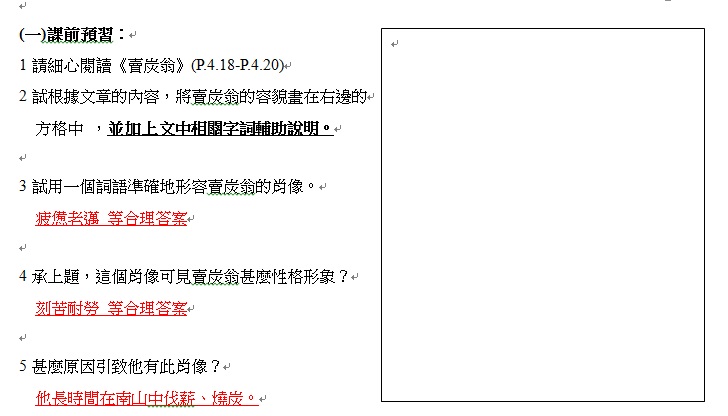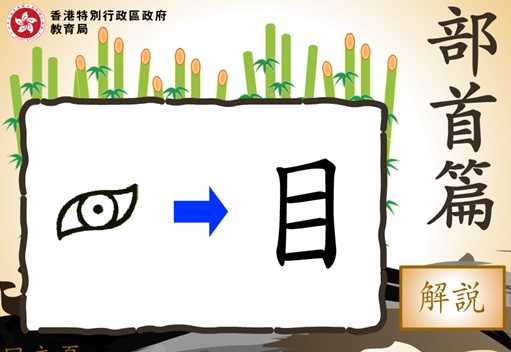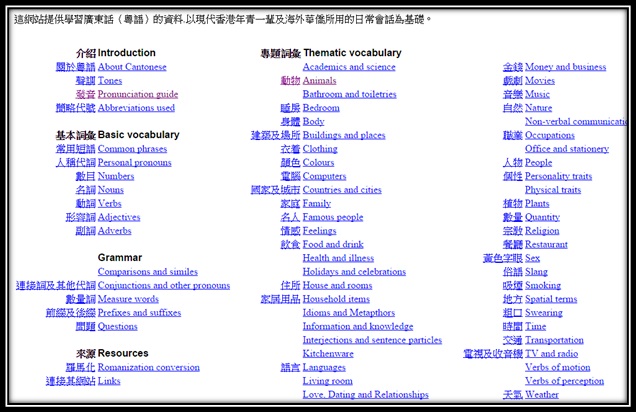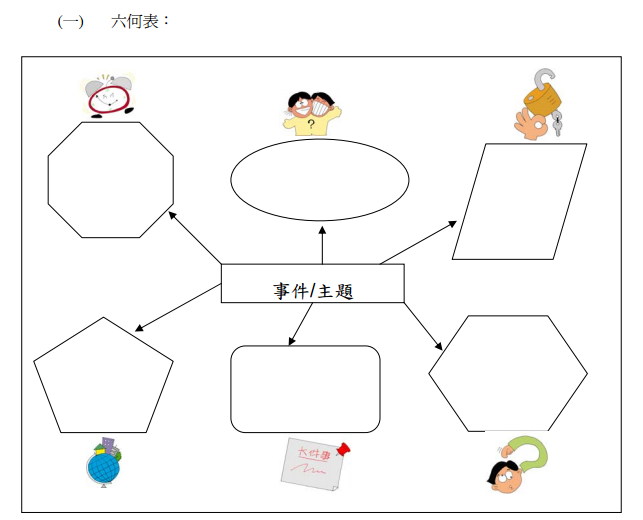This is my first year as a Chinese teacher teaching both junior and senior forms in a local secondary school. As a “freshman” in the field, I have had lots of ideas and expectations in my mind on both pedagogy and students’ learning outcomes. However, in the beginning of the school year, I found that students’ performance during lessons and their learning outcomes are far from my expectations. Since my school is a “low-banding” school, students are mostly low-motivated in learning, and some even refuse to learn, they are less confident and thus a vicious cycle is always affecting these students, especially in languages subjects. Since they seldom read and thus can never improve their writing, reading comprehension skills…etc.
Nevertheless, my school never gives up on our kids. We teachers would like to increase their initiative on language learning. Thus, “Autonomous learning [1] with the help of ICT” is introduced and being practiced in junior forms. Autonomous learning is a student-centered learning mode,
Student-centered learning based on the trust on human……there is a belief on human’s positive talent, these talents could be achieved once acquired condition is provided. 方展画 (1990) [2]
which aims at stimulating students’ learning motives and foster collaborations among students in order to create an interdependent learning atmosphere in our school.
As my previous blog posts mentioned, there would be “pre-lesson” tasks on each passage to be taught, students have to finish several tasks online/ in the worksheets before lessons. According to 趙霞及孫雲曉 (2008), the process of preparation for lessons before class is the beginning of learning[3]. In order to increase their learning motives, we designed several tasks related to specific learning targets for students to finish at home.
For instance, when teaching《賣炭翁》(an old man selling charcoals) , the learning target is students learn to describe different people with their outlooks, languages, thoughts and actions. Thus, we first asked students to go through the passage once and try to draw the appearance of the old man with descriptions in the passage (see below).

Then, during lessons, teacher divides students into several groups and asks them to show their drawings with other group members and explain with their own words. I found that students love to express their ideas with pictures and their own words, they are eager to compare their work and could remember several difficult literary words when those are used in their drawings. Moreover, with the help of ICT, good work are being posted and discussed online, students tend to comment on the relativeness of their classmates drawing and the text.

Student’s beautiful drawing with captions
After 3 months of teaching, I could see gradual improvement in my class. Students are more willing to learn, and to comment on what they are learning (Learning by Design), an autonomous learning habit is created within the class, which I think is more important than the marks on the exam paper. I could see students who like to talk or lie on the desk are willing to participate in class. It is because they could gain their confidence back through drawings, commenting…etc. And through Inquiry-Based Learning, they could help each other and solve problems by themselves which largely reduced teacher’s burden.
As a language teacher, I am glad to see the change brought by autonomous learning with the help of ICT, which largely increased the learning initiative of students when comparing to the traditional way of learning, a rather passive way to learn which depends on the teacher’s output most of the time. The previous way cannot help much on students who have lower incentive on language learning, who hate copying teachers’ notes, and the ones who can never sit well in their places for 45 minutes. I believe students have their own virtues, e.g. leadership, drawing talents…etc. Therefore, autonomous learning with the help of ICT could give more chances for students to express themselves, to help each other, and learn in an active way, and most importantly, to help our students to remember knowledge through an easier path.
Teaching Non-Chinese speaking students (NCS)
Another advantage brought by ICT is that it helped a great hand on teachers who teach non-Chinese speaking students (NCS students). As a teacher of a group of 15 NCS students, I found that they have a rather low incentive in learning Chinese language, since they think that Chinese characters are like pictures, which is hard to write and to remember. Thus, my team members and I tried to take the advantage of ICT to change the way of teaching for these students.
Literally, we start with different components of Chinese characters, strokes and the order of strokes. With the help of “Chinese characters components learning games”, components are being sorted and explained figuratively.
Moreover, different strokes and order of strokes are being shown online, students could revise the order at anytime and anyplace, which largely increased the efficiency of the lesson on practices strokes and their orders.
Phonologically, we also introduced different software to students which help them to learn Cantonese at home, with few clicks in their electronic devices. One of the software could turn text into speech. This software is very convenient for students’ in which they could less rely on the help of the teacher, and could foster their self-study (see below).
For senior forms, we also introduced other useful websites for our students to increase their exposure on Cantonese out of the class. With the help of ipad, students could practice their conversations with the words provided on the web.
As a result, ICT has largely helped teachers with the usage of these online materials, teaching non-chinese speaking students is still a new subject to Chinese language teachers, through online test bank (as mentioned in my previous blog), there is an inter-school cooperation which largely reduced the burden of teachers, so do our students.
Read more on online teaching materials for NCS students:
[7] http://www.dragonwise.hku.hk/dragonwise_main/index.html
[8] http://www.dragonwise.hku.hk/sa/index_c.htm
Teaching students with Special Education Needs
Dyslexia
There are three dyslexia students in my class, they are low-motivated in language learning, as they have difficulty on processing phonological elements with characters.
The use of ICT could help to ease their problem through visual and auditory stimulation (Multi-sensory teaching)[9]. With colorful images and interactive mode of learning, students are more willing to learn Chinese Language. These websites could improve their foundations on language structure and characters recognition…etc.
Moreover, there are
several teaching plans online which provide lots of teaching materials for teachers to teach SEN students. These websites largely reduce the time consumed on lesson preparation. For example, there are graphs with images for students to organize their ideas before writing.
“Of course, in order to encourage students to write more, we have to reduce their fear on writing and reading. First we have to encourage them more. Second, we have to use vivid and interesting way to let students write on things they are interested in. For example, picture composition is a better way to encourage students to write.[12]”
Therefore, picture composition is always used in order to help my students to organize their thoughts and express their ideas chronologically. Students are more willing to write when things are under their control.
All in all, I believe the best way to encourage different students to learn is to eliminate their fear on language learning. Once they gained confidence in learning, their motivation on it will thus increase. As different students have different learning levels, teachers should set suitable targets for them to reach in order to see gradual improvement. We must treat students as unique individuals and let them fly within their own territories.
Read more on SEN students support
References:
[1]趙霞 及 孫雲曉 (2008) 。 自主學習決定成功:養成自主學習好習慣, 灕江: 灕江出版社。
[2]方展画 (1990) 。 二:“學生為中心”教學的理論歸屬. 在罗杰斯“学生为中心”教学理论述评 (p. 68). 北京: 教育科學出版社.
[3]趙霞 及 孫雲曉 (2008) 。 自主學習決定成功:養成自主學習好習慣, 灕江: 灕江出版社。P.163「學會預習是學會學習的開始」。
[4]漢字基地–部首篇 (2012). Retrieved November 29, 2014 from, 香港教育城 Web site: http://www.hkedcity.net/edb/teachingresources/resources.php?site_key=chi&categoryId=1189
[5]文字轉語音工具, 看漢科技有限公司. Retrieved November 29, 2014 from, 香港貿發局 Web site: http://tdc.putonghuaonline.com/tool/index.php
[6]Learn Cantonese 學廣東話 (2002-2014). Retrieved November 29, 2014 from, Cantonese.ca Web site: http://cantonese.ca/
[7]現龍計劃, Retrieved November 29, 2014 from The University of Hong Kong, 現龍系列 Web site: http://www.dragonwise.hku.hk/dragonwise_main/index.html
[8] 南亞裔學生漢字學習軟件套 (2006). Retrieved November 29, 2014 from The University of Hong Kong, 現龍系列 Web site: http://www.dragonwise.hku.hk/sa/index_c.htm
[9] [如何幫助有讀寫困難的學童. (2001, January 1). Retrieved November 23, 2014, from http://www.edb.gov.hk/attachment/en/about-edb/publications-stat/publication/SLD_CD.pdf
[10]星願思語 (2014). Retrieved November 29, 2014 from, 星願小王子工作室有限公司 Web site: http://horoscope.little-prince.com.hk/
[11] 視覺組織圖表 (2009). Retrieved November 29, 2014 from 香港特別行政區政府教育局, 教育心理服務(新界)組 Web site: http://www.hkedcity.net/cms_files/cms-sen/1-1000/d4454df959270a4a7f514768b1627a93543/3.1.pdf
[12] 如何輔導語文水平稍遜的中學生 (2009). Retrieved November 23, 2014 from 香港特別行政區政府, 教育局教育心理服務(新界)組 Web site:http://www.hkedcity.net/cms_files/cms-sen/1-1000/511c3568bb5db64ea398b0f10d7048f3544/4.1.pdf











